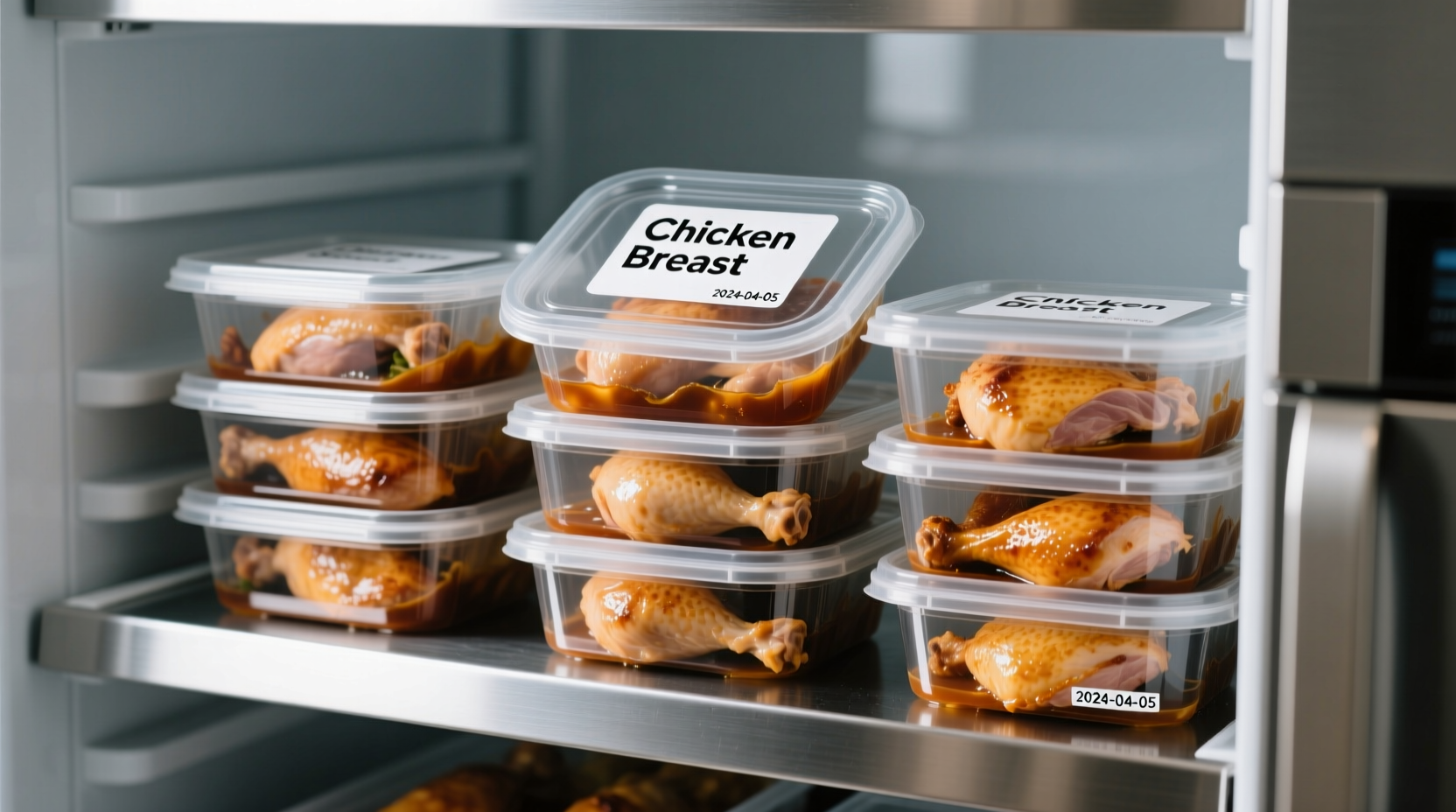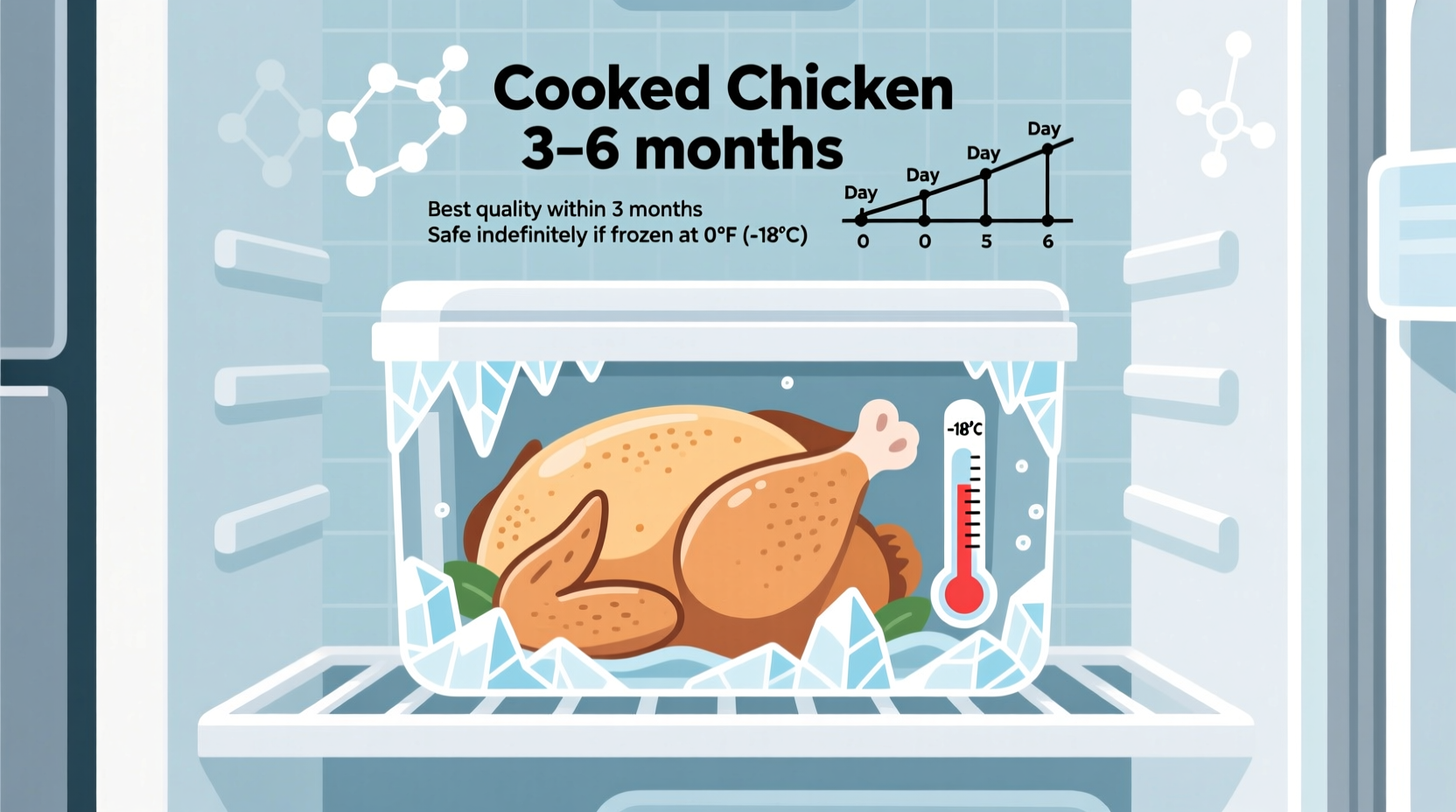Ever cooked a big batch of chicken only to wonder how long it'll stay fresh in your freezer? You're not alone. Millions of home cooks face this exact question each week as they try to minimize food waste while ensuring meal safety. The answer isn't just about dates on your calendar—it's about understanding the science of frozen food preservation and implementing proper storage techniques that make the difference between delicious reheated meals and disappointing, freezer-burned leftovers.
When You've Just Finished Cooking: The Critical First Step
Timing matters more than you think. Immediately after cooking, chicken enters the "danger zone" (40°F-140°F) where bacteria multiply rapidly. To maximize freezer life:
- Cool cooked chicken within 2 hours of cooking (1 hour if room temperature exceeds 90°F)
- Divide large portions into meal-sized containers—this speeds cooling and prevents temperature fluctuations when accessing your freezer
- Avoid placing hot containers directly in the freezer, which raises the overall temperature and risks partial thawing of other items
Proper Packaging: Your Freezer's First Line of Defense
How you package cooked chicken determines whether it lasts 4 months with great quality or develops freezer burn in weeks. The USDA recommends these methods in order of effectiveness:
| Packaging Method | Expected Quality Duration | Key Benefits |
|---|---|---|
| Vacuum-sealed containers | 6-12 months | Eliminates air exposure, prevents ice crystal formation |
| Rigid freezer containers with tight lids | 4-6 months | Minimizes air space, protects against physical damage |
| Freezer bags with air removed | 3-4 months | Affordable option when properly executed |
| Regular containers or bags | 1-2 months | High risk of freezer burn and flavor loss |
Regardless of method, always label containers with contents and date using freezer-safe markers. The FDA emphasizes that proper labeling prevents "mystery meals" and helps you rotate stock using the first-in-first-out principle.

Freezer Conditions: It's Not Just About Temperature
While maintaining 0°F (-18°C) is essential for safety, these often-overlooked factors determine actual quality duration:
- Temperature stability: Frequent door openings cause fluctuations that accelerate quality loss. Chest freezers typically maintain more stable temperatures than upright models.
- Moisture control: Excess moisture leads to ice crystals that damage chicken texture. The USDA recommends wrapping meat in moisture-vapor resistant materials before placing in containers.
- Storage location: Place cooked chicken toward the back of the freezer where temperatures are most consistent, away from the door where fluctuations occur.
Thawing and Reheating: Preserving Quality After Freezing
Even perfectly frozen chicken can become unsafe or unpalatable with improper thawing. Follow these evidence-based methods:
Safe Thawing Methods (USDA-Approved)
- Refrigerator thawing: Place frozen container on a plate in the refrigerator (allow 24 hours per 4-5 pounds). This maintains temperatures below 40°F throughout the process.
- Cold water method: Submerge sealed package in cold water, changing water every 30 minutes (30 minutes per pound).
- Microwave thawing: Only when cooking immediately after, as some areas may enter the danger zone.
Never thaw cooked chicken at room temperature—this allows rapid bacterial growth in the outer layers while the center remains frozen.
When Quality Degrades: Recognizing Spoilage Signs
Even within the recommended timeframe, improper storage can compromise safety. Check for these warning signs before consuming:
- Texture changes: Excessive dryness, mushiness, or slimy surface
- Odor: Sour, rancid, or "off" smells (freshly thawed chicken should have little odor)
- Visual cues: Large ice crystals, discoloration (grayish hue), or extensive freezer burn
The USDA Food Safety and Inspection Service states: "If you're ever in doubt about the safety of frozen food, remember: when in doubt, throw it out."
Special Considerations for Different Chicken Preparations
Not all cooked chicken freezes equally. These preparation-specific guidelines help maximize quality:
- Bone-in vs. boneless: Bone-in portions maintain moisture better but take longer to freeze and thaw
- Sauces and gravies: Chicken in broth or sauce freezes better than dry portions (up to 6 months)
- Seasoned vs. plain: Salt-heavy preparations may experience faster texture degradation
- Casseroles: Maintain quality for 2-3 months due to multiple ingredients with different freezing properties
For food safety emergencies, the USDA maintains a 24/7 virtual representative at fsis.usda.gov/food-safety where you can get immediate guidance on questionable food items.
Practical Freezer Management Tips
Implement these professional kitchen techniques at home:
- Create a freezer inventory sheet tracking contents and dates
- Use the "mason jar method" for soups and stews—leave 1-inch headspace for expansion
- Flash-freeze small portions on baking sheets before final packaging to prevent clumping
- Store cooked chicken below raw meats in the freezer to prevent potential cross-contamination during thawing











 浙公网安备
33010002000092号
浙公网安备
33010002000092号 浙B2-20120091-4
浙B2-20120091-4